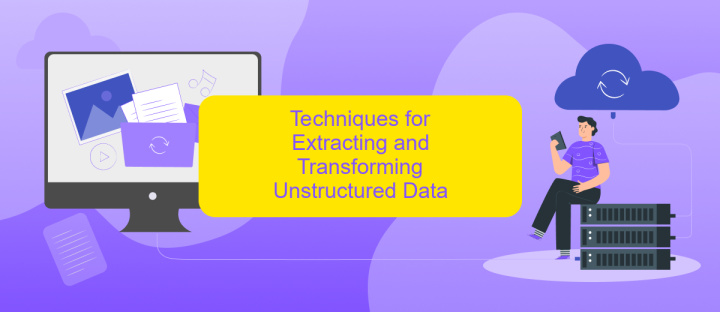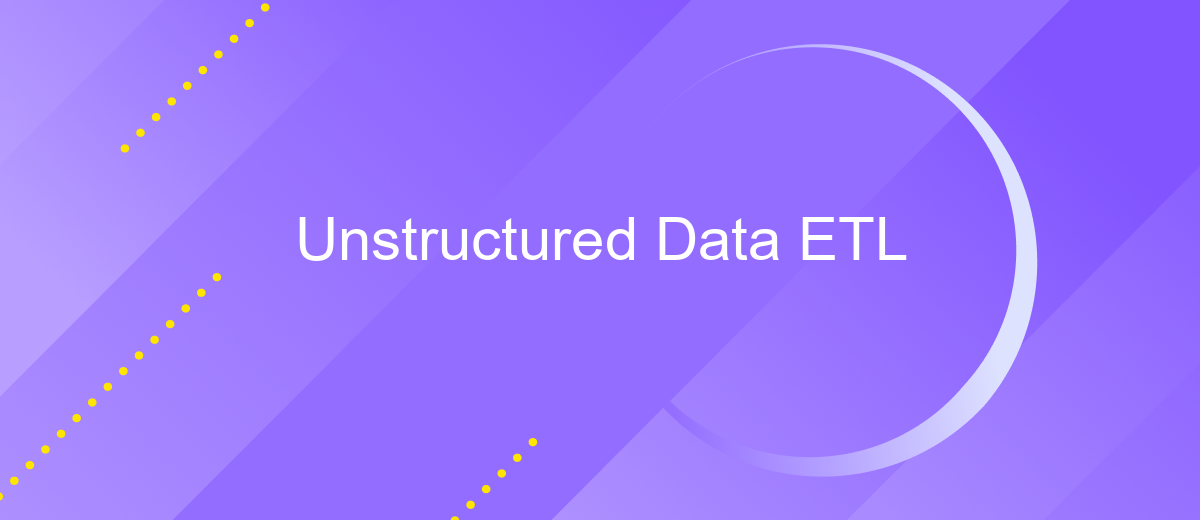Unstructured Data ETL
Unstructured data, encompassing everything from emails to social media posts, presents both challenges and opportunities for modern enterprises. ETL (Extract, Transform, Load) processes are crucial for converting this raw, unstructured data into valuable insights. This article delves into the importance of ETL for unstructured data, exploring methodologies, tools, and best practices to unlock its full potential.
Introduction
Unstructured data, encompassing everything from emails and social media posts to multimedia files, poses unique challenges for data extraction, transformation, and loading (ETL) processes. Unlike structured data, which fits neatly into tables and databases, unstructured data requires sophisticated techniques to parse, analyze, and integrate into existing systems.
- Extraction: Identifying and retrieving relevant data from diverse sources.
- Transformation: Converting unstructured data into a usable format.
- Loading: Inserting the transformed data into a target system.
Effective ETL solutions for unstructured data often involve advanced technologies such as natural language processing (NLP) and machine learning. Tools like ApiX-Drive can facilitate these processes by automating data integration and ensuring seamless connectivity between disparate systems. By leveraging such tools, organizations can unlock valuable insights from their unstructured data, driving better decision-making and operational efficiency.
Challenges of Unstructured Data ETL

Extracting, transforming, and loading (ETL) unstructured data poses significant challenges due to its inherent complexity and variability. Unlike structured data, unstructured data lacks a predefined format, making it difficult to parse and analyze. This can include text documents, images, videos, and social media posts, which require sophisticated algorithms and tools to interpret meaningfully. The diversity of data sources and formats necessitates advanced preprocessing techniques to convert unstructured data into a structured form suitable for analysis.
Another major challenge is the integration of unstructured data from multiple sources. Traditional ETL tools often struggle with the flexibility needed to handle unstructured data. Services like ApiX-Drive can be invaluable in this context, offering seamless integration capabilities that simplify the process of connecting various data sources. ApiX-Drive automates data transfer and transformation, enabling businesses to efficiently manage unstructured data workflows. Despite these advancements, ensuring data quality and consistency remains a complex task, requiring continuous monitoring and validation to maintain the integrity of the extracted information.
Techniques for Extracting and Transforming Unstructured Data

Extracting and transforming unstructured data is a complex process that involves various techniques to convert raw data into a structured format suitable for analysis. The following methods are commonly used:
- Natural Language Processing (NLP): Techniques such as tokenization, sentiment analysis, and named entity recognition help in interpreting and structuring textual data.
- Optical Character Recognition (OCR): This technology is used to convert different types of documents, such as scanned paper documents, PDFs, or images, into editable and searchable data.
- Web Scraping: Tools and scripts are employed to extract data from websites, transforming it into a usable format.
- Integration Services: Platforms like ApiX-Drive facilitate the integration of various data sources, automating the extraction and transformation process.
These techniques are essential for making unstructured data usable and valuable. By employing tools like ApiX-Drive, businesses can streamline the integration and transformation of data from multiple sources, ensuring that the data is ready for analysis and decision-making.
Data Quality Management for Unstructured Data

Managing data quality for unstructured data is a complex yet essential task in any ETL process. Unlike structured data, unstructured data comes in various formats such as text, images, and videos, making it challenging to standardize and validate. Ensuring the accuracy, completeness, and consistency of this data is crucial for making informed business decisions.
Effective data quality management involves multiple steps, including data profiling, cleansing, and validation. Data profiling helps in understanding the structure and content of unstructured data, while data cleansing removes inaccuracies and inconsistencies. Validation ensures that the data meets predefined quality criteria before it is loaded into the target system.
- Data Profiling: Analyzing data to understand its structure and content.
- Data Cleansing: Removing inaccuracies and inconsistencies.
- Data Validation: Ensuring data meets quality criteria.
- Integration: Using tools like ApiX-Drive for seamless data integration.
Utilizing integration services like ApiX-Drive can significantly streamline the ETL process for unstructured data. ApiX-Drive offers robust features for connecting various data sources, automating workflows, and ensuring that data is transferred accurately and efficiently. By leveraging such tools, organizations can maintain high data quality and make better-informed decisions.
Conclusion
In conclusion, the process of ETL (Extract, Transform, Load) for unstructured data is a critical aspect of modern data management. The ability to efficiently handle and integrate unstructured data sources is essential for organizations aiming to leverage the full potential of their data assets. By utilizing advanced ETL tools and platforms, businesses can transform raw, unstructured data into valuable insights that drive informed decision-making and operational efficiency.
Furthermore, services like ApiX-Drive play a pivotal role in simplifying the integration of various data sources, enabling seamless data flow and reducing the complexity of data management tasks. Such tools offer robust solutions for automating data extraction, transformation, and loading processes, ensuring data consistency and reliability. As the volume and variety of unstructured data continue to grow, adopting efficient ETL strategies and leveraging integration services like ApiX-Drive will be paramount for achieving data-driven success.
FAQ
What is unstructured data in the context of ETL?
What are the challenges of processing unstructured data?
How can automation tools help in ETL processes for unstructured data?
What are some common use cases for ETL with unstructured data?
How do you ensure data quality when dealing with unstructured data in ETL processes?
Strive to take your business to the next level, achieve your goals faster and more efficiently? Apix-Drive is your reliable assistant for these tasks. An online service and application connector will help you automate key business processes and get rid of the routine. You and your employees will free up time for important core tasks. Try Apix-Drive features for free to see the effectiveness of the online connector for yourself.

